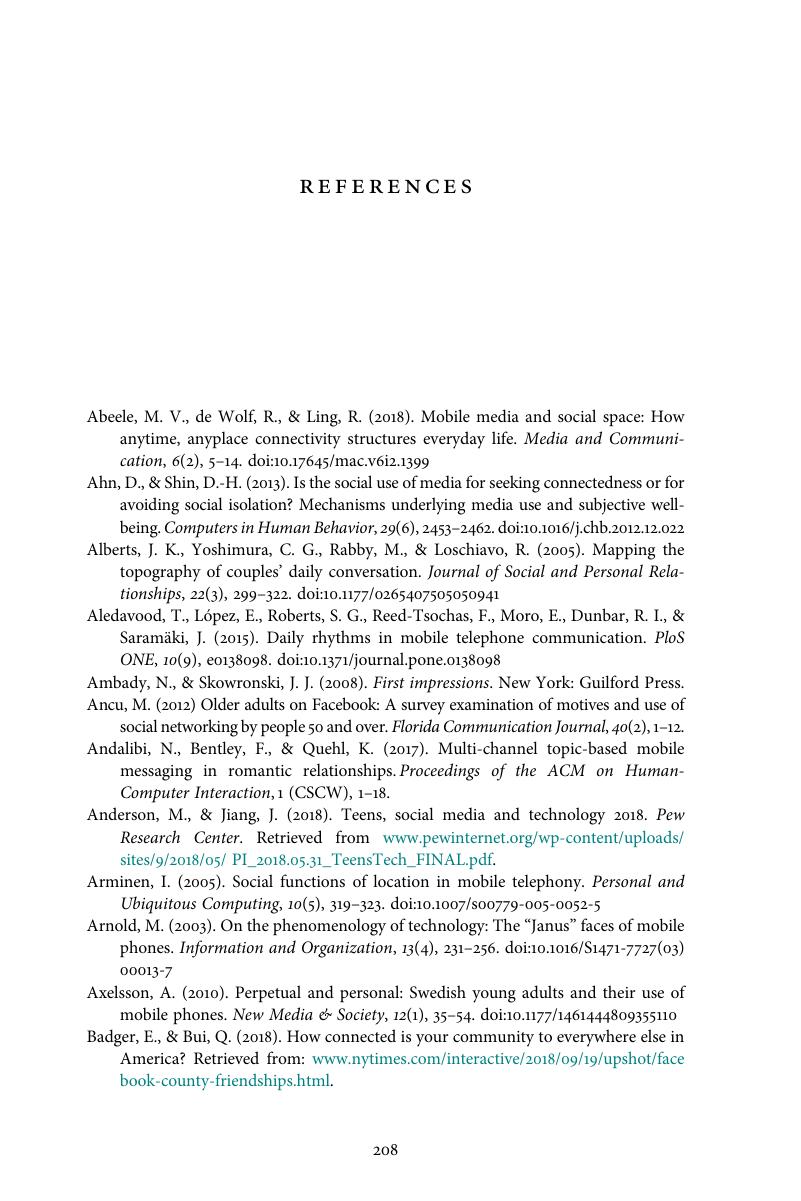Book contents
- Relating Through Technology
- Advances in Personal Relationships
- Relating Through Technology
- Copyright page
- Dedication
- Contents
- Figures
- Tables
- Introduction
- 1 Social Ecology and Personal Media
- 2 The Social Construction of Technology
- 3 Theoretical Perspectives on Personal Media and Relationships
- 4 Niche, Media Displacement, and Multimodal Relationships
- 5 Mode Comparison and Coexistence
- 6 Three Ways of Seeing Social Media
- 7 Five Enduring Tensions in Personal Media
- 8 Digital Stress
- 9 Social Displacement
- 10 Connectivity and Connection
- References
- Index
- References
References
Published online by Cambridge University Press: 26 June 2020
- Relating Through Technology
- Advances in Personal Relationships
- Relating Through Technology
- Copyright page
- Dedication
- Contents
- Figures
- Tables
- Introduction
- 1 Social Ecology and Personal Media
- 2 The Social Construction of Technology
- 3 Theoretical Perspectives on Personal Media and Relationships
- 4 Niche, Media Displacement, and Multimodal Relationships
- 5 Mode Comparison and Coexistence
- 6 Three Ways of Seeing Social Media
- 7 Five Enduring Tensions in Personal Media
- 8 Digital Stress
- 9 Social Displacement
- 10 Connectivity and Connection
- References
- Index
- References
Summary

- Type
- Chapter
- Information
- Relating Through TechnologyEveryday Social Interaction, pp. 208 - 236Publisher: Cambridge University PressPrint publication year: 2020

